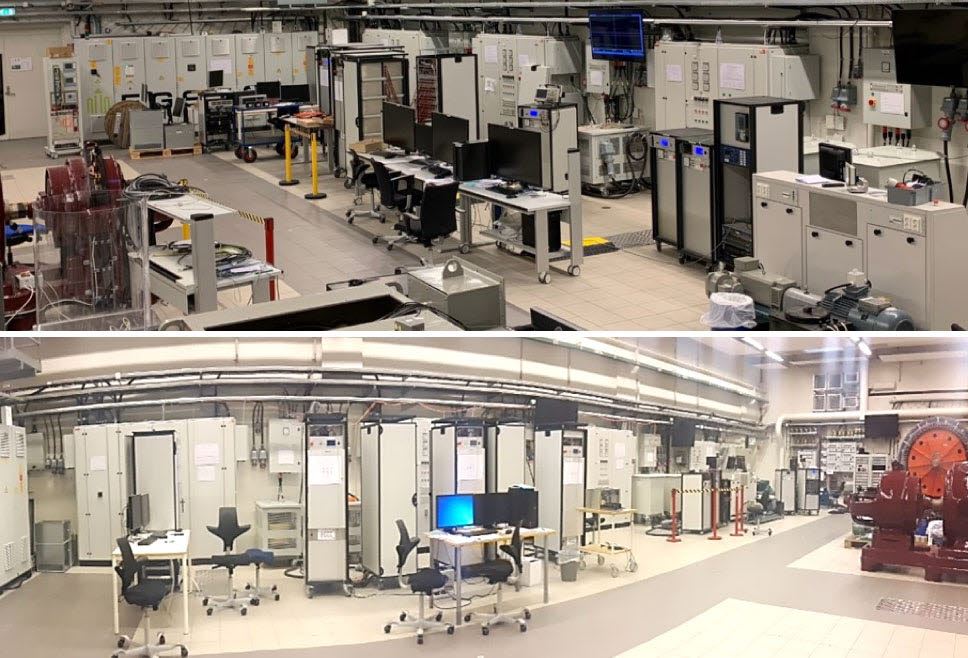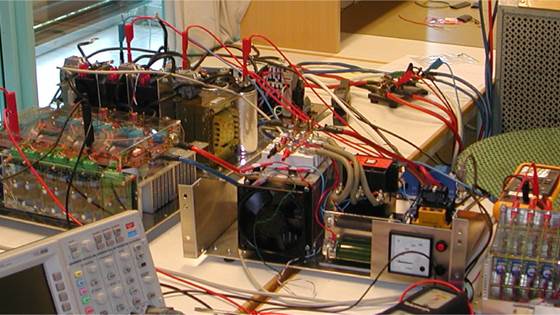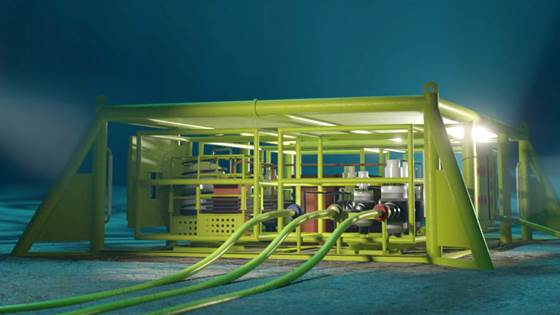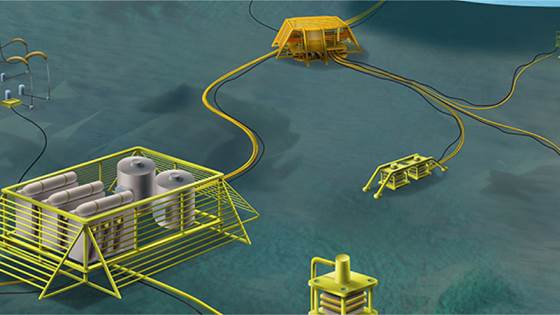The laboratory is a systemoriented laboratory providing state-of-the-art infrastructure for R&D, demonstration, verification and testing over a wide range of Smart Grid use cases.
Booking of the Smart Grid Laboratory
See the laboratory brochure (pdf)
New project: SDN MicroSense
Laboratory concept:
A specific feature of the laboratory is the opportunity to integrate real-time simulations and physical power system assets (hardware in-the-loop) with ratings up to 200 kVA, 400 V AC or 700 V DC.
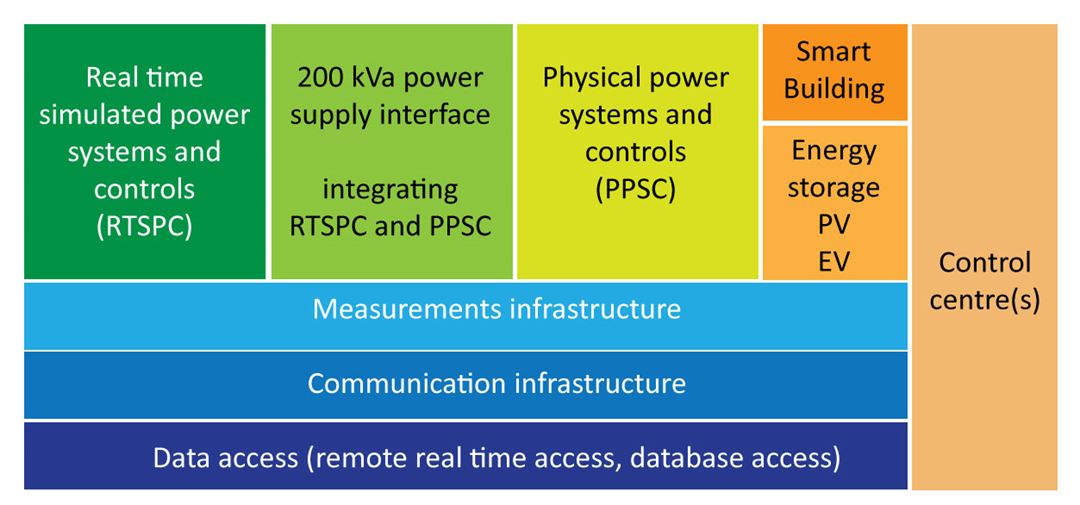
Laboratory inventory / capabilities
- Transmission systems (AC/DC)
- Distribution systems
- Generation (Large scale, DG, wind farms, PV, hydro..)
- AC/DC converters: Voltage Source Converters (VSC) and Multi-Level Converters (MMC)
- Rotating machinery: Induction generators/motors (IG), Synchronous generators/motors (SG), Permanent magnet generators/motors (PM)
- Grid emulator (200 kVA amplifier , DC to 5 kHz)
- Real-Time Digital Simulators, Hardware-In-the-Loop (HIL) testing equipment and Rapid Control Prototyping (RCP) systems (OPAL-RT)
- Battery pack tester / Battery emulator
- EV charging infrastructure
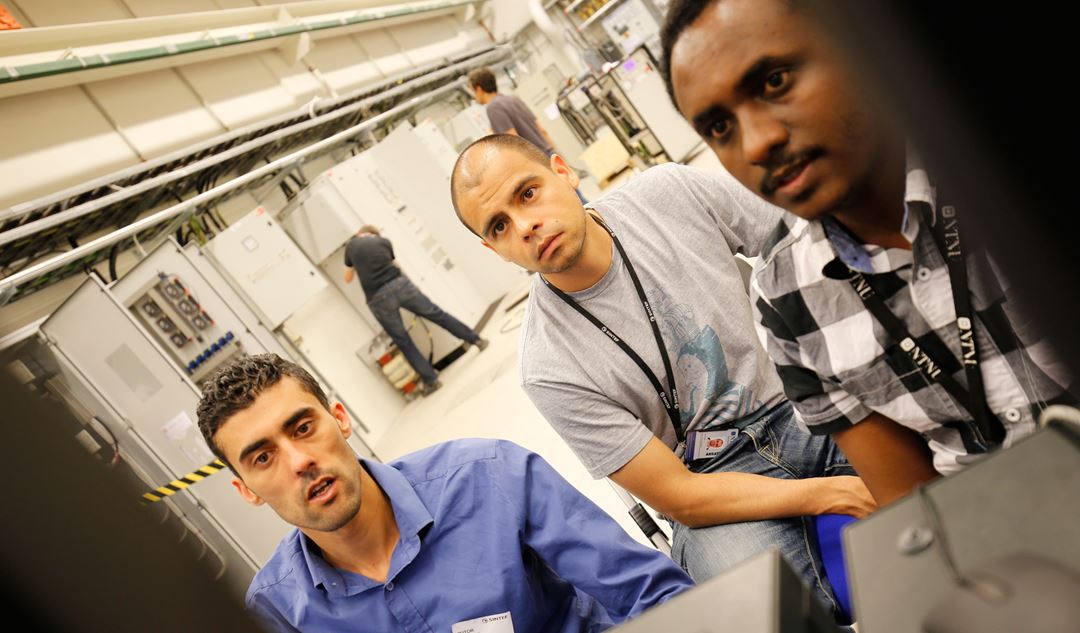
Application areas / Domains supported
- Smart transmission grids
- HVDC grids
- Smart active distribution grids
- Micro grids
- Integration of Smart Grids, Smart houses and smart industries Integration of renewables (large scale, DG)
- Smart Grid and home automation
- Smart electricity use
- Electrification of transport
- Energy storage in Smart Grids
- Energy conversion in Smart Grids
- Power system stability in Smart Grids
- Monitoring, control and automation in Smart Grids
- Communication technologies for Smart Grids
- Information security and privacy in Smart Grids
- Reliability challenges in Smart Grids -dependencies of Power Grid and ICT
- Smart grid software
- Big data management and analytics in SmartGrids
Laboratory use
This short video introduces the Norwegian Smart Grid Lab run by SINTEF and NTNU, Trondheim and how it can interact with another national laboratory - the Cyber Range, NTNU Gjøvik - to study and test cybersecurity for Electrical Power Systems and stations. SINTEF and NTNU are both partners in the EU project SDN µSense* focusing on this topic).
*SDN-microSENSE aims at providing and demonstrating a secure, resilient to cyber-attacks, privacy-enabled, and protected against data breaches solution for decentralised Electrical Power and Energy Systems (EPES)
Tour of the Norwegian National Smart Grid Laboratory
This video is from the ECODIS project and shows an example of smartgrids and digital substations that can be replicated in the Smart Grid Laboratory.
Smart Home Management System
Test of devices, equipment, control technology and strategies for smart home energy, indoor climate and home security and safety. In the project, different architectures (central intelligence versus distributed intelligence) and systems (e.g. LonWorks, KNX,...) were investigated and tested for different scenarios realising basic functions such temperature, ventilation and light controls, integration with smart meters, remote control, smart phone integration etc.

Multi-terminal HVDC grid connecting offshore wind farms
Large multi-terminal HVDC grids are predicted for future implementation. We verified a control strategy that will ensure safe and stable operation of such grids. This was done using a future scenario featuring a North Sea supergrid connecting 3 countries with a large share of wind power (> 50%). The strategy maintained grid stability despite large variations in produced wind power. The number of converters and machines of the lab enabled this large and complex experiment.
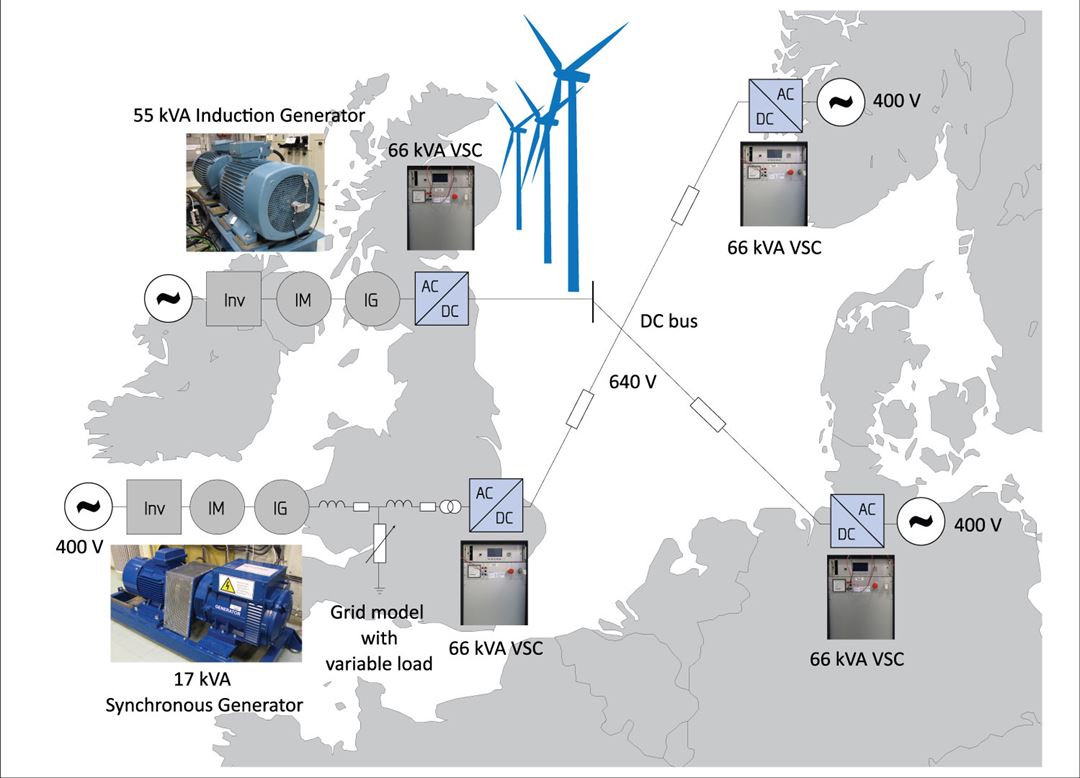
Frequency support from wind turbines
If wind turbines can support the electrical grid operation during faults then larger wind farms can be installed in areas with weak grids. We verified and quantified the effect of different control strategies on wind turbine performance during faults. The quantification included the effects of implementation on real hardware compared to software simulation. Tests were done for the two prevailing generator technologies that are used for wind turbines.

Product testing and verification
New products and solutions often need to be tested and verified in laboratory conditions before being commercialized. We have provided a test platform for different manufacturers to test their equipment, e.g. voltage boosters, short-circuit impedance measurement tools and power quality analysers.
Micro grid
The integration of real-time simulated power systems and controls interfaced with a small model micro grid is shown in the figure. The objective of the setup, is to test various microgrid control strategies.
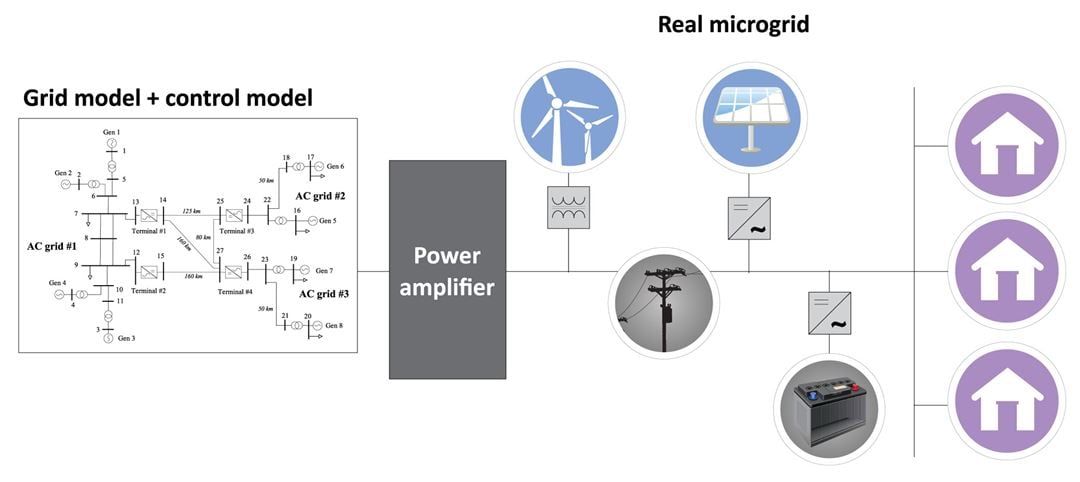
200 kVA Power Hardware in the loop (PHIL)
The purpose of the 200 kVA PHIL solution in the Smart Grid Laboratory is emulate power systems, devices and controls and their integration to physical model power systems, devices and controls to study system behaviour and performance for a reasonable power ranges and frequencies. The advantage compared to the testing of use cases at very low powers and voltages, is the ability to model certain physical phenomena in a realistic way (e.g. rotating machinery thermal effects and time constants). The figure shows the Power Hardware in the Loop setup with the OPAL RT real-time simulators (OP5600), the I/O devices (OP4520) and the 200 kVA, 5kHz Egston power amplifi er.
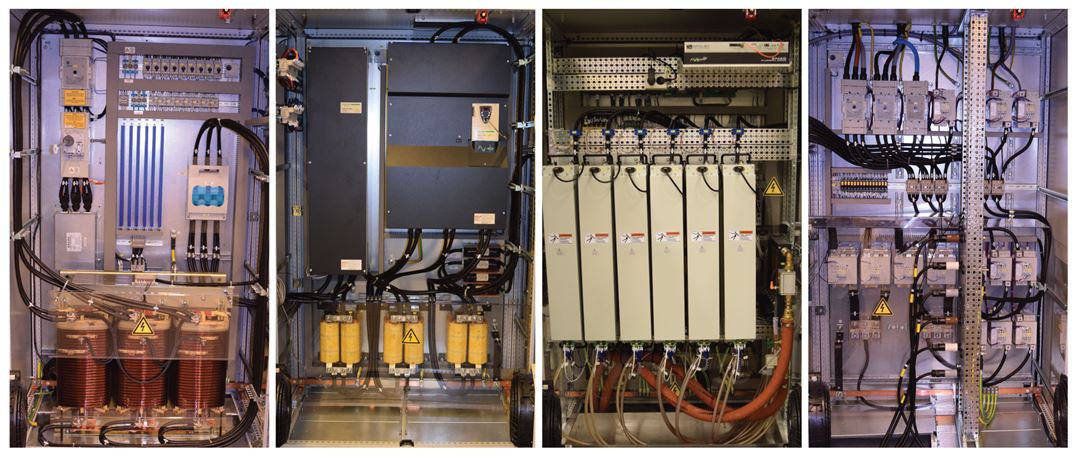

Example of physical power system setup
The Laboratory is very flexible with respect to topology and configuration.




